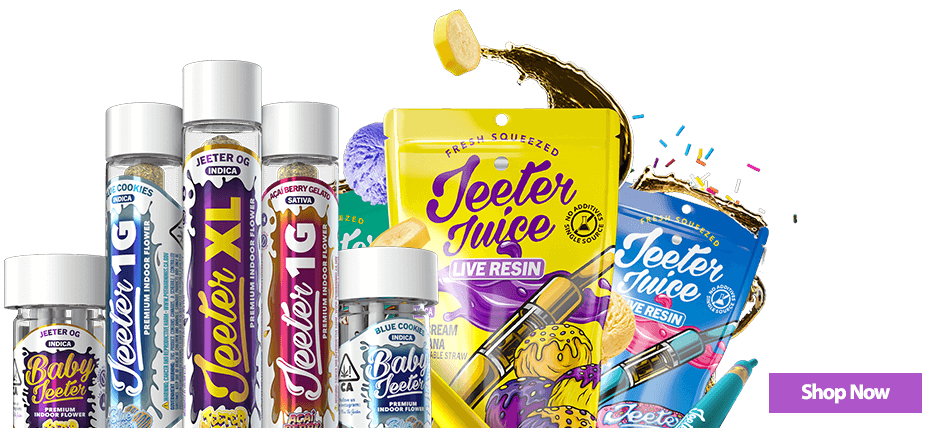Crystalline
What Is Crystalline?
THC crystals are solid cannabis concentrates that take on the appearance of crystals and contain cannabinoids in their purest form. These concentrates are known as THC crystals. THC is the term that refers to them. These crystals offer one of the finest means to consume THC because they are crystallized and separated from other cannabinoids and terpenes.
Despite this, there is a widespread misunderstanding about THC crystals in the cannabis community. The substance often referred to as THC crystals is THCA, which, when heated, changes into pure THC.
This article digs deeper into the history of THC and CBD crystals, investigating their origins as well as the potential applications of these crystals in the cannabis for medical use sector.
What Exactly Are THC Crystals?
THC crystals are a cannabis concentrate that has the appearance of coarse sugar and are used to garnish baked goods in a manner comparable to how sugar crystals are used. Diamonds, crystals, and crystallines are various names that can be used to refer to THC crystals. Crystals of THC exclusively contain THCA; they do not include any other cannabinoids or terpenes, nor do they have any plant components.
THCA is the only component that crystals of THC possess. As a consequence of this, neither their taste nor their odor can in any way be distinguished from one another. The transformation of THC crystals causes the euphoric effects of the cannabinoid into pure THC, which takes place when the crystals are heated.

The term "decarboxylation" refers to the process that takes place during this change. Despite the fact that these crystals do not contain any CBD or any other crystalline cannabinoids, it is possible to often locate CBD as well as other crystalline cannabinoids on the market. Consuming raw THCA, on the other hand, will not result in sensations of intoxication but will still deliver many of the probable advantages connected with it. Raw THCA has been shown to have anticancer properties.
THCA And THC
The presence or absence of a psychoactive effect is the primary distinction between THCA and THC. THCA does not appear to have the same level of psychoactivity as THC, which can have a profound effect on one's state of mind and lead to disorientation. A number of studies have put forward the theory that THCA does not activate the same receptors in the endocannabinoid system that THC does.
THC is able to make contact with CB1 receptors everywhere over the body as well as in the central nervous system, which leads to a wide variety of consequences, including the psychoactive effects of THC.
How Does THCA Work?
Studies conducted on rodents and in vitro indicate that there is a possibility that THCA may activate CB1 to some degree. However, researchers are not exactly certain how THCA works. Yet, researchers do not fully understand why THCA does not exhibit the expected psychoactive effects in this situation.
The question is whether THCA is unable to activate the CB1 receptor in the brain because it cannot pass the blood-brain barrier or whether activation of the CB1 receptor is insufficient to produce psychoactive effects. It is possible that the intricate interaction of THCA with CB1 and CB2 receptors could nevertheless give significant medical benefits. Likewise, other cannabinoids that do not result in intoxication could also do so. In any event, it would appear that THCA acts on at least part of the receptors in the body, causing effects such as anti-inflammatory and pain-relieving properties.
Other potential mechanisms may also be responsible for the positive effects of THCA, in addition to the cannabinoid receptors CB1 and CB2. Researchers have also discovered that THCA interacts with other receptors in the body. These receptors include TRP ion channels and PPARs, both of which play a significant role in neuroinflammation, metabolism, and the homeostasis of cells.
Why Is THCA Regarded As "Unstable"?
THCA represents just one stage in the development process. CBGA is a molecule that is produced by cannabis during its maturation process. This acid precursor is the origin of all other acid precursors, including THCA and, finally, THC. Therefore it is frequently referred to as the "mother of all cannabinoids." This is because it is the source of all other acid precursors.
Once the cannabis plant has reached the point when it is ready to be harvested, it will already have a large quantity of THCA. Nevertheless, the development is not yet at its final stage.

When the cannabis plant gets older or is subjected to heat or oxygen, the cannabinoid known as THCA can gradually transform into the "neutral" form of a cannabinoid known as THC. Because it spontaneously converts into THC and other compounds over time without any outside interference, THCA is regarded as an unstable compound. The circumstances of storage have a major impact on how quickly this occurs; nonetheless, according to the findings of one study, the rate at room temperature is approximately 10% each year.
The process of decarboxylation, which happens while smoking, vaporizing, or boiling edible items, can, of course, also be purposefully sped up by heat, just like any other chemical reaction. This can be done in the same way. THC, on the other hand, is not the final step in this development. In the presence of further time, heat, or light, THC has the potential to further deteriorate into CBN or, less frequently, delta-8 THC.
Possible Advantages Of THCA Usage
There hasn't been much research done on THCA, and even fewer studies have investigated its effects on people, but anecdotal evidence and studies both point to the possibility that it may have some useful applications in medicine. Researchers have discovered, through the use of in vitro investigations, that THCA interacts with a number of molecular targets that are typically linked with actions that are anti-inflammatory.
In individuals with inflammatory bowel disease, a cannabinoid called CBD, which also has anti-inflammatory effects, was found to be less effective at lowering inflammatory responses than another cannabinoid called THCA, which was tested using tissue from the colon.
In a separate study that was carried out in the year 2020 on mice, researchers found that THCA has the potential to be helpful in lowering inflammation as well as other symptoms linked with obesity-related metabolic syndrome. The administration of THCA to obese mice resulted in a considerable reduction in weight gain, body fat percentage, and health issues such as glucose intolerance, insulin resistance, and hepatic steatosis. This was the case even though the animals continued to be obese.

According to the findings of other studies, THCA has the potential to act as an anticancer agent, a regulator of the immune system, and a neuroprotective agent in disorders such as Parkinson's disease. In spite of the fact that none of this research has been conducted on actual people, the findings of studies conducted in laboratories show plausible pathways that could lead to favorable results.
In addition to its euphoric effects, THCA has the potential to be a very promising medication that could replace THC in the treatment of many of these illnesses. On the other hand, in order to get the answers, you truly need to identify exactly how beneficial THCA is for each of these illnesses; thorough human studies are the only thing that can do it.
Is THCA The Same As THC Crystals?
Crystalline THCA or isolated THCA are more accurate terms to use when referring to THC crystals. In contrast to THCA, pure THC that has been decarboxylated remains liquid even when the temperature is at room temperature and cannot form a crystalline structure. Crystals of THCA are typically white or semi-transparent in appearance and are extracted from the cannabis plant.
They can contain up to 99% THCA, which gives them an extremely high level of potency. They do not have any odor, taste, or other cannabis compounds, including terpenes, and they do not contain any of these chemicals. In rare cases, the crystals may contain trace amounts of terpenes or other contaminants that are trapped inside the crystal structure; nevertheless, in most cases, the crystals consist entirely of pure THCA.
How Can THC Crystals Be Used?
THCA crystals are an exceptionally flexible kind of cannabis concentrate that may be applied to a wide variety of purposes. Inhaling THCA crystals directly into an inhalation device is one method that is becoming increasingly popular because it produces a powerful and immediate effect.
The effects of other cannabis preparations can be enhanced by grinding THCA crystals into a powder and adding that powder to the cannabis product. For instance, you can smoke THCA by adding some powder to a bowl, joint, or chamber of a vaporizer and then inhaling the resulting vapor. Crystals of THC can also be combined with other concentrates like shatter, wax, or terp syrup to create new products.
The Production Process Of THC Crystals
The formation of THC crystals requires careful and repeated processing of cannabis oil to create a one-of-a-kind substance. Crystalline THC is frequently the primary isolate that is utilized in cannabis items, particularly edibles and vape cartridges. It is possible to be measured precisely, and when administered at the same dose, it consistently and reliably produces the same results.

Raw cannabis plants are the source of the material that is used to make THC crystals. Processors combine the cannabis with various solvents, such as acetic acid and hexane, and then subject the mixture to very specific heat and pressure settings in order to isolate the THCA from the cannabis plant material and crystallize it.
In order to obtain the crystals, the hemp oil must first be carefully refined into a single compound. This compound serves as the foundation for the various cannabis products that are created. Despite the fact that it may have a higher potential for potency, the crystal does not have the flavor of other concentrates, nor does it have the potential therapeutic advantage of being isolated from the original terpenes.
Caution is advised, as the creation of crystal can involve very high risks and is disapproved of in many countries. It is recommended that you leave this to those who are trained in it. Many people are also interested in the process of thoroughly refining cannabis oil and CBD isolate.
What Adverse Effects Does THCA Have On The Body?
Because THCA has not been the subject of any studies involving humans, very little is known regarding the potential adverse effects of THCA. On the other hand, anecdotal reports and scientific research on the effects of THCA suggest that it is not psychoactive and has fewer negative side effects than THC does.
Although there is some evidence to suggest that adverse effects may be minimal and the study is still ongoing, there is reason to assume that these cannabinoid acids and other cannabis metabolites that are similar to them may interfere with the normal metabolism of drugs.
In general, THCA is a non-psychoactive cannabinoid that has the potential to aid people suffering from inflammation and discomfort, as well as perhaps serve as a neuroprotector and treatment for cancer. Patients who are unable to handle the effects of THC or who do not desire to be under its influence may wish to investigate this alternative. Even though THCA is already being utilized by a large number of people in the medical field, additional research is required to completely comprehend the scope of its potential applications. medical cannabis
Advantages And Potential Methods Of Use
Crystals containing THC can be utilized in a number of different ways, which makes them a flexible consuming strategy for cannabis. Patients have the option of orally ingesting THC crystals, incorporating them into a dish they have prepared themselves, or melting them in either butter or oil.
In order to quickly and easily prepare homemade tinctures, the crystals can also be dissolved in olive or coconut oil. Decarboxylation of THC crystals is a prerequisite for the psychoactive effects, as THC crystals cannot produce these effects on their own.

THC crystals can also be combined with other cannabis concentrates or concentrated media in order to boost the potency of the combined product or to produce effects that are more tailored to the user's preferences.
Some people look for medicines that have a high concentration of THCA or THC. Chronic pain patients, for instance, may use THC as a distraction from the unpleasant feelings they are experiencing. However, if you give up cannabinoids and terpenes like cannabidiol (CBD), cannabigerol (CBG), and beta-caryophyllene, you may also give up the potential pain-relieving and anti-inflammatory properties that these compounds have. Concentrating solely on THC may not always be the best strategy.
Possible Adverse Reactions And Negative Effects
Consuming cannabis in the form of THC crystals that have been heated is a highly effective strategy, but it is not recommended for people who are quickly overpowered by high THC concentrations.
Crystallized THCA, on the other hand, does not include the terpenes, cannabinoids, or flavonoids that are present in cannabis flowers and other cannabis concentrates. As a result, the effects of crystallized THCA may not be the same as those of cannabis. Terpenes are the chemical compounds that give each strain or variety its distinctive flavor and effects. Without them, the crystals will not be able to deliver the same benefits that are available through the entourage effect.
Should You Make Use Of THC Crystals?
THC crystals are a multipurpose and extremely effective form of concentrate that patients can utilize in a variety of settings and applications. THC crystals, on the other hand, do not contain any of the terpenes or other chemicals that are responsible for producing specific, focused effects.
If you are expecting to treat a specific condition with cannabis, though, you should look into other products instead. Patients should steer clear of poorly manufactured isolates because certain extraction processes may also include the use of toxic chemicals.
What Is CBD Crystal Made Of, What Are Its Benefits, What Are Its Applications?
What exactly are CBD crystals, what are the advantages of making use of them, and how should one make the most of them so as to maximize their therapeutic potential? You will find information on this page on the procedure by which CBD crystals are extracted, ranging from the appropriate technique to utilize it to the possible benefits of consuming it.

It is important to clarify, before moving on to talk about the qualities and advantages of CBD crystals, that CBD is not extracted from marijuana but rather from hemp (hemp Sativa). THC makes up less than 0.6% of the total amount of hemp, but CBD makes up a substantially larger percentage. CBD is a non-psychoactive chemical that has been shown to have a variety of positive effects on the body.
Essential Facts About CBD Crystals
Crystals derived from CBD are an alternative to CBD that can be advantageous for individuals who do not wish to eat THC or experience its effects. It is a chemical that is taken from the cannabis plant, and it possesses properties that make it sedative, as well as anti-inflammatory and antispasmodic. Crystals derived from CBD are distinct from other products available on the market since they are composed entirely of CBD.
It's enough to say that other CBD-based solutions, in addition to the active ingredient, may contain other naturally occurring substances already present in the cannabis plant (such as minerals and vitamins), as well as a THC content of up to 0.2%. This is in addition to the fact that CBD itself may contain other naturally occurring substances.
Other cannabinoids, such as CBN (cannabinol) and CBG, are also extracted from crystals, despite the fact that these cannabinoids are not as well recognized as they once were in the past.
Production Of The Crystals
Cannabidiol, sometimes known as CBD, is only one of the several chemicals that may be found in hemp. Crystals are the most concentrated form of this component, which is the active element. Isolating, then extracting, and ultimately purifying the cannabidiol results in the production of these crystals.
The extraction of the active substance is performed with cutting-edge machinery that subjects the buds to treatment with carbon dioxide (CO2) while applying supercritical pressure. Cannabidiol does not make use of any chemical or synthetic solvents, which are not only known to be harmful to both individuals and the environment but also have the potential to reduce the effectiveness of the final product.
Chlorophyll, traces of resins, oils, and THC, even terpenes and flavonoids are all present in CBD crystals, which could compromise their purity. After the active substance has been extracted, the process that allows the crystal to be isolated removes everything that normally makes up the plant material. Therefore, after the purification process and the treatment, the only thing that is left is a molecule of CBD or cannabidiol that has a very high purity (above 99%) and is completely free of heavy metals and pesticide residues.
The final product is a cannabidiol molecule that is unadulterated, crystalline, and solid. Because it does not have any psychoactive effects like its more well-known counterpart, tetrahydrocannabinol (THC), CBD does not require a doctor's prescription to be purchased.
Different Methods Of Use
Now, you'll learn about the benefits and drawbacks of the most prevalent utilization of CBD crystals and the numerous ways people use them.
Dabbing
This is most likely the method that is used the most frequently with CBD crystals. The concentrate is basically dissolved, and then the resulting cloud of vapor is inhaled. The one significant disadvantage of utilizing this technique is that, in the event that you have never dabbed previously, you will have to make use of certain additives. These include a lighter, a dabbing tool, dabbing equipment, and, of course, CBD extract.
Dabbing equipment includes a lighter. As soon as you have all of the necessary equipment, put the crystals in the dabbing tool, heat the nail with the torch until it turns red, wait 30–60 seconds for it to cool down a little bit, then put the crystals on the nail to melt and inhale the vapor. When opposed to other approaches, this one has a distinct benefit in that its effects will be felt practically instantly. This method of taking CBD crystals is not only the tastiest but also the most effective way to do so.
Vaping
In many ways, vaping is relatively comparable to sniffing, with the primary differences being a faster start of the action and an improvement in flavor overall. When utilizing concentrates, you won't need nearly as much equipment as when dabbing, but you will need a vaporizer that's of high quality (flower vaporizers are not suitable).
After adding the extract, heating it to the appropriate level, and taking a deep breath, inhale the vapors. It is not difficult at all. Be careful not to heat it to an extreme temperature, as this could cause the formation of carcinogens and benzenes, both of which should be avoided to the greatest extent feasible. This also applies to CBD crystal dabbing.
Mixing With Vape Liquid
You might also combine CBD crystals with the vaporizing liquid of your choice. Shake the vape liquid vigorously after adding the correct quantity of crystals to allow the CBD to dissolve. Please be aware that consuming e-liquid is associated with increased danger to one's health. As a result, this approach to taking CBD crystals might not be the most effective one.
Making Edibles
To make edibles, CBD crystals, much like cannabis, can be combined with other substances, such as coconut oil or butter. After the butter or oil has melted completely over low heat, sprinkle the crystals over the top. After five minutes of stirring, the butter should have completely melted. After that, the mixture can be combined with the remaining components called for in the recipe. The flavor won't be quite as overpoweringly "herbal" as it can sometimes be when consuming cannabis. However, as is the case with many edibles, the effects may not manifest for anywhere between one and two hours after consumption.
Mixing With Oil
You can get the finest results by using olive oil, hemp oil, or coconut oil. You are, in essence, producing your own CBD oil, although one that is significantly more strong. In order to completely combine the ingredients, the oil and crystals will need to be heated together in a hot water bath for around ten minutes. A 10% concentration of CBD can be achieved by dissolving 1,000 milligrams of CBD crystals in ten milliliters of oil. In addition to being the most efficient use of CBD crystals, this is also the most cost-effective method.
Production Of THC In Its Purest Crystalline Form
You've probably noticed the little, glistening, tacky pearls that can be found on cannabis buds. These structures, which are known as trichomes, are responsible for producing the vast majority of the cannabis plant's THC. These trichomes are typically purified into a more concentrated form while making cannabis concentrates. Hashish, for instance, is produced by reducing the trichomes to a liquid and then pressing the melted resin into a single block of amber. THC Crystalline is comparable; however, the production method is far longer and more laborious.

In order to make THC Crystalline, a refined cannabis product (like hashish, for example) is combined with a sort of solvent throughout the manufacturing process. Using this solvent, one can begin the process of separating THC from other compounds. After that, the chemicals that do not contain THC are further separated and dissolved with the help of filters, heat, and pressure.
The completed product is then put through a vaporizer to remove the solvent, leaving behind THC that is 99.9% pure and able to crystallize when it is allowed to dry. Crystalline THC is produced through a method that involves the use of solvents, heat, and pressure, all of which can be hazardous to human health. If you do not have any experience in the process of chemical extraction, it is in your best interest to let professionals do it.
Does Crystalline Get You High?
Crystalline, in its natural state, does not provide a psychoactive high. It must first be heated in order to undergo decarboxylation and then be converted into THC. THC-A is an acidic form of THC; by itself, it does not produce psychoactive effects. If you consume it, you might not experience any side effects at all.
Because it is converted into pure THC when consumed in ready-to-drink form or smoked, crystalline THC-A has the potential to produce a strong high. The heated version, whether smoked or consumed orally, contains a significant amount of THC.
Why Should You Utilize Pure THC Crystals?
Because of its high level of purity, crystalline THC has the potential to be significantly more powerful than other forms of cannabis. This is one of the main reasons why some individuals choose to smoke it. The absence of additional cannabinoids and terpenes, on the other hand, results in an experience that is distinct from and less calming than smoking cannabis plant material.

If you want an experience that is fuller and more potent than the norm, you can also add Crystalline THC crystals to your edible concoctions or sprinkle a tiny bit of it in another bowl. Both of these options are available to you. This will deliver a more potent effect while still retaining the flavor and relaxation benefits associated with smoking buds. In addition to this, the impacts typically manifest more rapidly.
Any cannabis experience can be improved with the addition of pure crystal THC. Adding pure THC to your cannabis is something you may do if you want the next time you smoke to be a more potent and memorable experience.
Do The Effects Of THC Crystals Vary From Person To Person?
The simple answer is that it is. It is not known how taking such a large quantity of pure THC may affect you psychologically or physically. People frequently become so ecstatic about THC and the "high" that they may not be aware of the effects that are associated with it.
The concept of an additive impact refers to the concept that the entire mixture of hundreds of cannabinoids, flavonoids, and terpenes work together to generate an effect that is more comprehensive on the body. This indicates that the pharmacological, physical, and emotional effects of the many components working together contribute to what people refer to as the "high."
For instance, a combination of terpenes and cannabinoids can be utilized as a treatment for both anxiety and alterations in mood. Terpenes and CBD have been shown to alleviate some of the anxiety that can be brought on by high doses of THC, as well as protect against the possibility of hallucinogenic effects.
With crystal THC, the complete effect on the body and the full range of 'highs' depend on how the body reacts to the THC. This is because crystal THC is more concentrated than other forms of THC. THC crystals, on the other hand, can provide a more concentrated high since they only expose the user to a single cannabinoid at a time, which has an effect on the body. Therefore, it will not be difficult for you to determine whether or not you enjoy it and whether or not it is effective for you.
What Are Some Possible Uses For Crystalline?
Crystalline can be consumed through the digestive system. To obtain the full advantages of THC-A or CBD, this can also be combined with oils to make tinctures or taken in tablet form. Both of these options are available. However, unless the crystalline form is heated to the point where it decarboxylates, it does not provide the psychoactive effects of intoxication, nor does it provide the advantages of CBD.
Before being smoked, THC crystals can be mixed together with other cannabis products, including extracts, herbs, joints, or flowers, to boost the amount of psychoactive compounds they contain.
Crystals of THC can also be smoked directly using a device called a jumper. You can use the crystals on their own rather than a concentrate, wax, or diluted version of the substance. Heating THC-A in a dab rig allows users to inhale THC in its purest form.
Is Crystalline A More Effective Concentrate Than Others Available?
Crystalline has a higher potency compared to other concentrates. It contains 99.9% THC when cooked, boiled, or smoked. "Better" is arguable. A lot of various cannabinoids and terpenes are packed into concentrates, which is what gives them their unique effects and makes them more beneficial to your health.
Crystalline cannabis is derived from various extracts and concentrates, which means that it has likely undergone further chemical processing and distillation. Crystalline is made using a significant quantity of chemicals, solvents, and processes; as a result, the final product is becoming increasingly unlike the plant in its natural state.
Is Crystalline Dangerous?
When you use Crystalline, you are in complete control of the quantity and dosage that you ingest. Although this may make the experience more manageable, the THC content is still 100 percent present.
When you smoke Crystalline, you have no way of knowing how much THC you are actually ingesting at any given moment when you take a drag. If you use cannabis in excessive amounts, you will take in a far higher concentration of the psychoactive compound known as THC than is typically found in edibles, flowers, or vaporizers.
Some research is also required to assess the consequences of crystal methamphetamine consumption over the longer term. There is also the possibility of acquiring a dependence on marijuana or a disorder related to marijuana use. When utilizing cannabis crystals, as opposed to other cannabis products, you should exercise an extreme amount of caution.
The Bottom Line
THC crystals are a type of cannabis concentrate that has the look of coarse sugar and are used to garnish baked goods in a manner that is akin to how sugar crystals are used. THC crystals can also be used to medicate patients. Crystals of THC also go by the names diamonds, crystals, and crystallines; however, all of these terms refer to the same thing. THC crystals only contain THCA; they do not contain any other cannabinoids or terpenes, nor do they contain any other plant components. Crystals of THC solely include THCA; it is not present in any other form. As a direct result of this, it is impossible to differentiate one's sense of taste from another's sense of smell in any way at all.
When THC crystals are heated, they turn into pure THC, which is what causes the euphoric effects of the cannabinoid. This transformation occurs as a result of the heating of the crystals. The chemical reaction that takes place during this transformation is referred to by the term "decarboxylation." In spite of the fact that these crystals do not include any CBD or any other crystalline cannabinoids, it is frequently feasible to find CBD as well as other crystalline cannabinoids available for purchase on the market.
Consuming raw THCA, on the other hand, will not result in feelings of intoxication but will still give many of the possible benefits associated with it. Raw THCA is found in cannabis and has been linked to a variety of medical benefits. It has been demonstrated that raw THCA possesses anticancer effects. Many people get surprised to learn these characteristics of THCA crystalline.
Crystals that are formed from CBD are an alternative to CBD that might be helpful for individuals who do not wish to consume THC or feel its effects. Crystals derived from CBD are also advantageous for individuals who are allergic to CBD. It is a chemical that is extracted from the cannabis plant, and it possesses features that provide it with sedative, anti-inflammatory, and antispasmodic qualities. It is also extracted from the cannabis plant. Crystals created from CBD stand out from other goods on the market due to the fact that they are made up purely of CBD rather than any other component.
Suffice it to say that other CBD-based solutions, in addition to the active ingredient, may contain other naturally occurring substances already present in the cannabis plant (such as minerals and vitamins), as well as a THC content of up to 0.2%. This is enough information to make the point that other CBD-based solutions may contain these naturally occurring substances. In addition to this, there is the possibility that CBD itself may be contaminated with other naturally occurring chemicals.
Disclaimer: This material is for informational purposes only and should not be relied on for legal, medical, financial, or any other professional advice.











